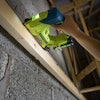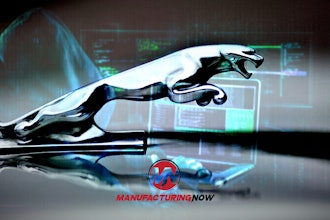
Right now, the manufacturing industry as a whole is facing demands for faster processing, more precise production, and higher output. However, there are industry-specific manufacturing changes taking place, too. And while we will have to wait and see what the rest of 2017 brings, we can begin looking at what existing trends and projections reveal about the future of discrete manufacturing, aerospace and defense manufacturing, engineer-to-order (ETO) manufacturing, and several others.
As a comprehensive tool for managing these changes, it’s important to see how enterprise resource planning (ERP) software plays a role, too.
Discrete Manufacturing
As better communication and access to suppliers and manufacturers become available via a stronger technological structure and a broader global network, the era of worldwide discrete manufacturing can really begin to stretch its legs in 2017. This globalization is bringing additional customers, materials, and resources to the forefront and is providing a better opportunity to source the best materials at the optimal price, and reach a broader range of customers.
Historically, discrete manufacturing has struggled with two things: planning and scheduling processes in real-time, as well as transparency and open communication between order and supply. This separation causes a lack of knowledge transfer between suppliers and their customers, leading to a slowdown in production, and even lost revenue.
An ERP system can be a viable solution in solving these problems, as it can help scale resources and manage costs, quality, revenue and growth. It can also ensure plans are organized, easily reviewable, and communicated throughout the entire chain from ordering to manufacturing and delivery.
Aerospace and Defense
The A&D industry is growing in both commercial and defense sectors, but slowly. According to the U.S. Industrial Outlook findings by the Manufacturers Alliance for Productivity and Innovation, A&D production is set to rise less than two percent in 2017, but is challenged in part by low commodity prices and sluggish growth in emerging economies.
Alternatively, defense revenues are building as spending increases in response to higher defense budgets and a focus on stimulating military growth in many prominent countries, including the United States, the United Arab Emirates, Japan and Russia.
Armed forces are looking to next-generation technologies to meet their needs and compete with modern defense trends. This means a large focus will be placed on replacing existing equipment with new and improved tech substitutes.
These increases in demand will require the manufacturing of innovative new products. With a customer-centric ERP software system, manufacturers can respond to customer feedback and make on-the-fly adjustments while creating cost-effective management of the supply chain.
Engineer-to-Order (ETO)
As demand for custom robotics and one-of-a-kind designs continues to increase in 2017, ETO manufacturers must plan, budget, and purchase accordingly. Process and quality control is key. Instead of creating a repeatable product, ETO manufacturers must build unique and often very complex products for each customer. This makes the cost of mismanaging the manufacturing process very high.
In 2017 we’ll see a greater focus on visibility and streamlining the end-to-end process through:
- Digitizing the shop floor.
- Providing quality control throughout the entire enterprise.
- Conducting big data analysis.
- Automating manual processes.
- Collecting actionable ERP metrics.
ETO manufacturers must seek out a competitive advantage, and this is an area where an ERP solution can help. ERP can create a positive feedback loop of streamlined order management that produces accurate estimates leading to faster order fulfillment and contract acceptance while increasing the bandwidth for additional orders.
Other Industry Outlooks
High-tech and electronics, industrial machinery, and medical devices are all displaying promising growth for 2017. According to the U.S. Industrial Outlook findings from the Manufacturers Alliance for Productivity and Innovation (MAPI), 2017 brings with it a high-tech production gain of 2.7 percent. They also anticipate a two percent rise in industrial machinery production and a three percent increase in medical equipment production.
Changes in the furniture and fixtures manufacturing industry will focus on technology integrations, creating furniture products that pair technology with form. The aim here is to increase convenience and comfort for the customer, as well as boost the business’ bottom line.
Technology Trends
As usual, automation is at the forefront of technology trends for manufacturing, as well as for businesses at large. Automated order fulfillment, inventory, communication, and analyzing power are all part of the solutions for faster speeds, better predictions, fewer errors and better pricing. Green manufacturing is another leading trend. Better technology plus an environmental focus means companies are working to create new and improved manufacturing processes.
The 2017 outlook stands to help revive certain sectors of the market and bring a great deal of technological advancement to the manufacturing process. Driven by better enterprise resource planning analysis tools, manufacturers can now anticipate market needs and work in a more agile environment.
Aaron Continelli is the president of Cre8tive Technology and Design. Started in 2005, the consulting firm now has a staff of 58 in three office locations. Specializing in ERP system sales and services, Cre8tive Technology and Design is an EPICOR ELITE partner.























